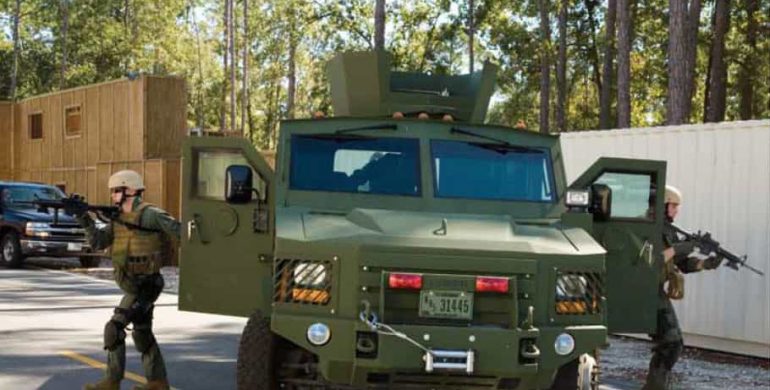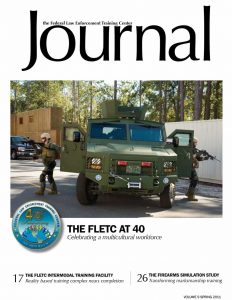In 2011 the Federal Law Enforcement Training Center (FLETC) was asked to determine if the combination of a virtual weapon trainer and laser handgun could be used to teach basic marksmanship. A virtual weapon trainer simulates what a real range looks like – including targets that move, turn and face for specific time intervals.
To accompany the virtual weapon trainer, FLETC selected a Glock 17 outfitted with a resetting trigger and laser insert that would fire an invisible laser each time the trigger was pressed.
After 18 hours of classroom instruction, students shoot the course of fire and must achieve a qualifying score of 210 out of 300 possible points. Therefore, the real question to be answered was whether the final score of those using a laser handgun in basic marksmanship would be significantly different from those using a live-fire handgun.
FLETC found that students using a laser weapon (without recoil) during training shot an average qualifying score of 275.8. Those who used a live-fire weapon shot an average of 278.2. An independent T-test – a test that looks for statistical differences between two independent groups—found this difference to be statistically insignificant.
The students trained with a non-recoil laser handgun for basic marksmanship achieved statistically similar qualification scores to those training with a live-fire weapon. In addition to the potential cost savings, laser handgun marksmanship training offers several instructional advantages and also provides a safer environment than live-fire.
Can Firearms Simulators Teach Basic Marksmanship?
All training was done in accordance with the applicable lesson plans; however, those training with the laser handguns didn’t need to wear hearing protection. This allowed instructors to carry on normal conversations while instructing students in the proper stance, grip, sight alignment and trigger control. Students could freely ask questions and get answers without having to “yell” or “read lips.” One instructor commented that because he could get “up close and personal,” he was able to see errors in weapon handling, especially in respect to grip and trigger press, which he wouldn’t have normally been able to see.
Other benefits include a reduction in ammunition usage, accompanying cost savings associated with range maintenance, a safer environment, and freeing up valuable range time. This additional range time could then be used to teach more advanced live-fire courses and/or increase the throughput of basic training classes. Furthermore, since basic marksmanship using a laser handgun can be taught in a large classroom, those without an indoor range can still train no matter what the weather conditions might be outside.
While simulation training is not meant to replace actual live-fire training, several studies now indicate that firearm simulation is a viable approach to certain phases of marksmanship training.


